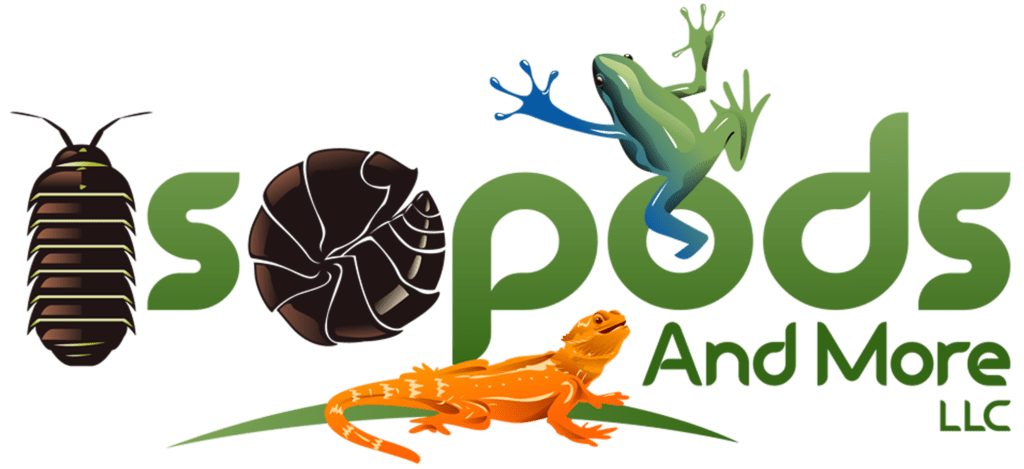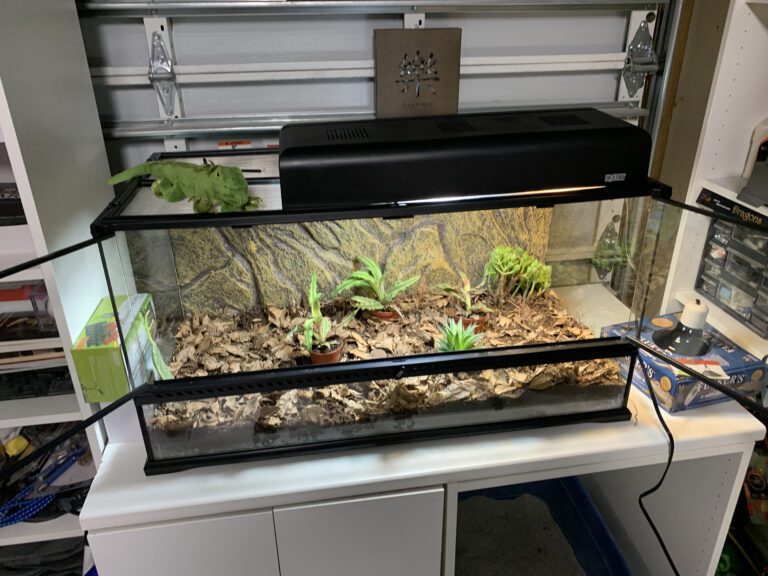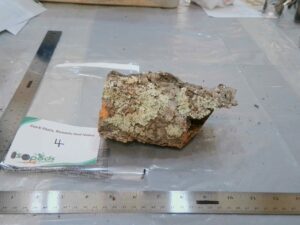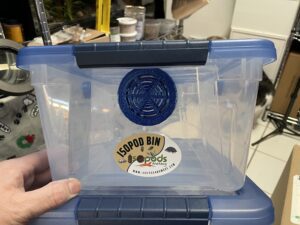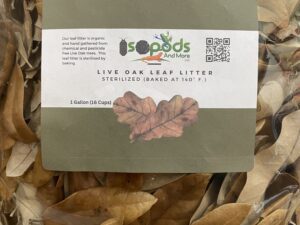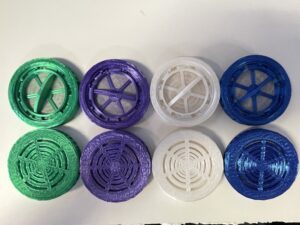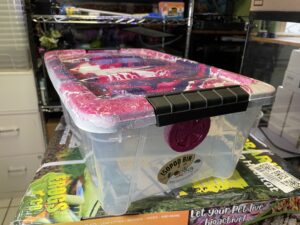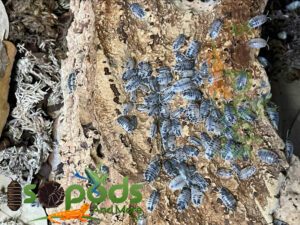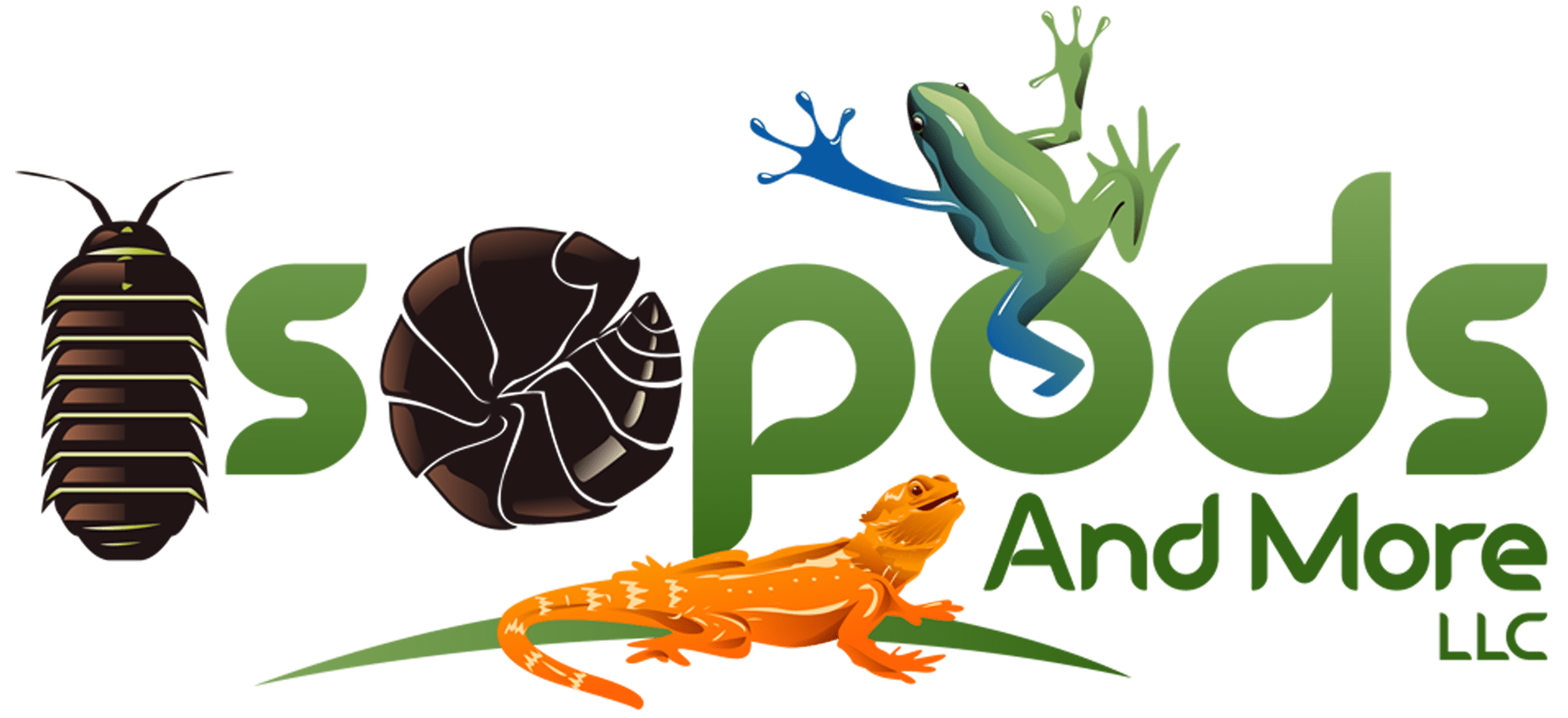Imagine transforming an empty glass enclosure into a thriving miniature desert oasis. With the addition of isopods, fascinating creatures that resemble tiny armored tanks, you can create a captivating desert terrarium that is both low-maintenance and visually stunning. These resilient isopods contribute to the ecosystem within the terrarium, helping to enrich the soil, control pests, and bring life to your mini desert landscape. Get ready to embark on a unique and enjoyable adventure as we guide you through the steps of creating your own desert terrarium with isopods.
Choosing the Right Isopods

Researching Different Isopod Species
When it comes to choosing the right isopods for your desert terrarium, conducting thorough research on different species is crucial. There are numerous types of isopods available, each with unique characteristics and requirements. By researching different species, you can gain valuable insights into their size, behavior, diet, and compatibility with a desert ecosystem.
Considering the Size and Activity Level
Isopods come in various sizes, ranging from small and delicate to larger and more robust. When selecting isopods for your desert terrarium, it’s essential to consider the size of your enclosure and how these creatures will interact with the environment. Smaller isopods are generally more suited for smaller terrariums, while larger varieties can thrive in more spacious setups. Additionally, take into account the activity level of the isopod species to ensure they will be active and visible within your terrarium.
Ensuring Compatibility with Desert Ecosystem
Since you’re creating a desert terrarium, it’s crucial to choose isopod species that are compatible with this type of ecosystem. Desert-dwelling isopods are specifically adapted to survive in arid conditions, making them an ideal choice for your terrarium. These species can tolerate low humidity levels and are well-suited to the warm temperatures often found in desert regions. By ensuring compatibility, you can create a harmonious environment where both the isopods and plants thrive.
Designing the Desert Terrarium
Selecting the Terrarium Size and Shape
The size and shape of the terrarium play a vital role in creating a suitable habitat for isopods. Consider the needs of the isopod species you have chosen, as some may require more space to roam and explore. Aim for a terrarium size that allows for sufficient substrate depth, hideouts, and space for live plants. Opt for a rectangular or square-shaped terrarium, as they provide more surface area for the desert landscape and promote better airflow throughout the enclosure.
Creating Suitable Desert Environment
To design an authentic desert environment within your terrarium, start by selecting the appropriate substrate. Desert terrariums often utilize a combination of sand, coconut fiber, and crushed rock or clay. This mixture mimics the natural desert soil composition, providing a stable foundation for the isopods and plants. Additionally, incorporate natural desert decorations, such as rocks, branches, and small caves, to add visual interest and create hiding spots for the isopods.
Providing Adequate Ventilation and Airflow
Proper ventilation and airflow are essential for maintaining a healthy desert terrarium. Isopods require fresh air exchange to thrive, and stagnant air can lead to mold growth and unhealthy conditions. Ensure your terrarium has ventilation openings or a mesh lid to allow for the circulation of air. Positioning the terrarium away from direct sunlight can also help regulate temperature and prevent excessive heat buildup.
Preparing the Substrate

Choosing the Right Substrate Material
Selecting the right substrate material is crucial for creating a suitable environment for both isopods and plants. Aim for a combination of moisture-retaining and well-draining substrate components. This ensures optimal moisture levels while preventing waterlogging, which can be detrimental to both the isopods and plants. A mixture of coconut fiber, sand, and a small amount of organic material, such as leaf litter or sphagnum moss, works well for desert terrariums.
Creating a Stable Substrate Layer
Creating a stable substrate layer is important for the well-being of your isopods and the overall health of your desert terrarium. Begin by adding a layer of horticultural charcoal at the bottom of the terrarium. This helps absorb excess moisture and prevents foul odors. On top of the charcoal, add a thick layer of the substrate mixture. Aim for a depth of at least 2-3 inches, providing ample space for the isopods to burrow and explore.
Adding Organic Matter for Nutrient Recycling
Introducing organic matter, such as leaf litter or decaying wood, to your desert terrarium can provide a source of nutrients and support natural microorganism activity. Isopods are excellent decomposers and play a crucial role in breaking down organic matter within the terrarium. By incorporating a small amount of leaf litter or bark, you create a self-sustaining ecosystem where the isopods can recycle nutrients, promoting overall terrarium health.
Adding Live Plants

Selecting Desert-Tolerant Plant Species
Incorporating live plants not only enhances the aesthetic appeal of your desert terrarium but also provides essential habitat elements for the isopods. When selecting plants, focus on desert-tolerant species that can thrive in arid conditions. Cacti, succulents, and other drought-resistant plants are excellent choices. Ensure the selected plants are non-toxic to isopods, as they may occasionally nibble on plant matter.
Creating an Appealing Landscape Design
Designing an appealing landscape within your desert terrarium can create a visually pleasing environment for both you and the isopods. Consider creating elevation with rocks or small hills to mimic desert landscapes. Utilize different plant heights and textures to add depth and variety. Incorporate driftwood or dried branches to create natural perches and climbing opportunities for the isopods.
Implementing Proper Plant Care and Maintenance
To ensure the health and well-being of the live plants in your desert terrarium, it’s essential to provide adequate care and maintenance. Research the specific care requirements of the chosen plant species, including watering schedules, lighting needs, and fertilization. Regularly monitor the plants for signs of over or under-watering, pests, or nutrient deficiencies. Pruning and removing dead or decaying plant matter is also crucial to maintain a clean and healthy terrarium environment.
Introducing the Isopods

Determining Optimal Number of Isopods
When introducing isopods to your desert terrarium, it’s important to establish an appropriate population size. The optimal number depends on various factors, including the size of the terrarium, the species of isopods, and the availability of food and resources. Start with a small number of isopods and observe their behavior, population growth, and overall impact on the ecosystem. Adjust the population accordingly to maintain a healthy balance.
Acclimating Isopods to the Terrarium
Before releasing the isopods into their new desert terrarium, it’s essential to allow them time to acclimate. Place the isopods in a separate container with a small amount of moist substrate from the terrarium. This helps them adjust to the new environment gradually. After a few days, release the acclimated isopods into the terrarium, ensuring they have suitable hiding spots and access to food and water.
Monitoring and Managing Population
Regular monitoring of the isopod population is crucial to maintain a healthy and sustainable ecosystem. Keep track of their population size, behavior, and overall health. If the population becomes overcrowded, consider thinning it out by transferring some isopods to another suitable enclosure. On the other hand, if the population is dwindling, ensure that there is enough food, water, and suitable hiding spots to support their growth, or you may need to introduce more isopods.
Providing Food and Water
Offering Suitable Food Sources
Isopods are detritivores, meaning they primarily feed on decaying organic matter. To provide a balanced diet for your isopods, include a variety of food sources such as decaying leaves, rotting wood, and vegetable scraps. Additionally, you can offer specialized commercial diets formulated for isopods, available at exotic pet stores or online. Ensure that the food provided is fresh and free from pesticides or other harmful chemicals.
Maintaining Proper Hydration Levels
Maintaining proper hydration levels is essential for the well-being of your isopods. Unlike some desert-dwelling creatures, isopods prefer a slightly moist environment. Mist the terrarium regularly to provide moisture for both the isopods and live plants. A shallow water dish can also be placed within the enclosure to offer a drinking source. Monitor the hydration levels and adjust as needed to ensure the isopods have access to fresh water without excessive dampness.
Preventing Contamination and Mold Growth
To prevent contamination and mold growth within your desert terrarium, it’s crucial to manage the food and water sources properly. Avoid overfeeding the isopods, as excess food can rot and cause bacterial growth. Remove any uneaten food promptly to maintain cleanliness. Additionally, ensure that the substrate is not overly wet, as excessive moisture can promote mold growth. Regularly inspect the terrarium for any signs of contamination and take immediate action when necessary.
Managing Temperature and Humidity
Creating a Desert-like Temperature Gradient
Maintaining appropriate temperature levels is vital for the overall health and activity of your isopods. Desert terrariums should mimic the temperature gradient found in natural desert environments. Provide a warmer area, around 75-85°F (24-29°C), and a cooler area, around 70-75°F (21-24°C). This temperature variation allows isopods to regulate their body temperature and choose their preferred microclimates within the terrarium.
Regulating Humidity Levels
While desert terrariums aim for low humidity levels, it’s essential to provide some moisture to prevent desiccation. The ideal humidity range for most desert-dwelling isopods is around 40-60%. Regularly misting the terrarium helps maintain adequate humidity levels. Monitor the humidity using a hygrometer and adjust misting frequency as needed. Be cautious not to over-mist, as excessive moisture can lead to fungal growth or other issues.
Avoiding Extremes and Temperature Fluctuations
Extreme temperature fluctuations can be harmful to isopods and may lead to stress or even mortality. Avoid placing the terrarium in direct sunlight or near drafts that can cause rapid temperature changes. Temperature stability is crucial for the overall well-being of the isopods and maintaining a thriving desert terrarium. Regularly monitor the temperature within the enclosure to ensure it remains within the optimal range for your selected isopod species.
Maintaining a Clean and Healthy Terrarium
Cleaning the Terrarium Regularly
Regular cleaning is essential for maintaining a healthy and visually appealing desert terrarium. Remove any uneaten food, shed exoskeletons, or debris from the substrate. Use a soft brush or tweezers to remove any accumulated dirt or dust from the decorations and terrarium walls. Avoid using any harsh chemicals or cleaning agents, as they can be toxic to isopods and plants.
Removing Debris and Dead Organisms
As part of regular maintenance, it’s important to remove any decaying organic matter, dead plants, or deceased isopods from the terrarium. Decomposing material can release harmful gases and promote the growth of bacteria or molds. By promptly removing debris and dead organisms, you ensure a cleaner and healthier environment for your isopods.
Preventing Pest Infestations
Pest infestations can pose a risk to the well-being of your isopods and the overall balance of your desert terrarium. Regularly inspect the terrarium for signs of pests, such as mites or small insects, and take immediate action if detected. Quarantine new plants or decorative items before introducing them to the terrarium to prevent potential pest introduction. Maintaining a clean substrate, removing decaying matter promptly, and providing adequate ventilation help prevent pest infestations.
Observing and Enjoying the Isopods
Watching Isopod Behaviors and Interactions
One of the most enjoyable aspects of keeping isopods is observing their unique behaviors and interactions. Isopods engage in fascinating activities such as foraging, digging, and socializing. Take the time to sit quietly and observe their behaviors, noting any interesting interactions or habits. You may witness them rolling into a defensive ball, exploring their surroundings, or even caring for their young.
Recording Observations and Behavior Patterns
Recording your observations and behavior patterns can be both educational and enjoyable. Create a journal or digital log and note any significant behaviors, changes in population dynamics, or observations of mating or birthing events. Tracking these patterns over time can provide valuable insights into the isopods’ behavior and overall health, and it also allows you to identify any irregularities or potential issues.
Creating a Relaxing Viewing Space
To fully enjoy the presence of your isopods and create a peaceful viewing space, consider setting up a designated spot for observing the terrarium. Place a comfortable chair or cushion nearby and position the terrarium at eye level or slightly above for a better viewing angle. Install soft, ambient lighting to enhance the terrarium’s aesthetics and create a captivating atmosphere.
Common Issues and Troubleshooting
Dealing with Overpopulation or Underpopulation
Overpopulation or underpopulation can occur in a desert terrarium, impacting the balance of the ecosystem. If you notice a significant increase in the isopod population, consider thinning it out by transferring some isopods to a new enclosure or finding other suitable homes for them. Conversely, if the population is dwindling, ensure that the terrarium conditions, including food, water, and hiding spots, are meeting the isopods’ needs.
Addressing Nutrient Imbalances and Deficiencies
Nutrient imbalances or deficiencies can affect the overall health of isopods and the plants within the terrarium. If you notice signs of malnutrition, such as stunted growth or discoloration in plants, consider adjusting the feeding regimen or introducing additional organic matter to the substrate. Regularly monitor the health of both the isopods and plants, and make necessary adjustments to prevent nutrient imbalances.
Identifying and Treating Common Diseases
Isopods are generally hardy creatures, but they can be susceptible to certain diseases or infections. Common signs of illnesses include lethargy, loss of appetite, abnormal behavior, or physical abnormalities. If you suspect that an isopod is sick, it’s essential to quarantine the affected individual and seek veterinary advice if necessary. Maintaining good hygiene, providing a balanced diet, and creating a stress-free environment can help prevent common diseases.
Creating a desert terrarium with isopods can be a rewarding and educational experience. By carefully selecting the right isopod species, designing an appropriate terrarium, providing suitable conditions, and maintaining a clean and healthy environment, you can enjoy observing these fascinating creatures as they thrive in their desert-inspired habitat. Remember to continuously monitor and adjust as needed to ensure the well-being of the isopods and the overall success of your desert terrarium project.
